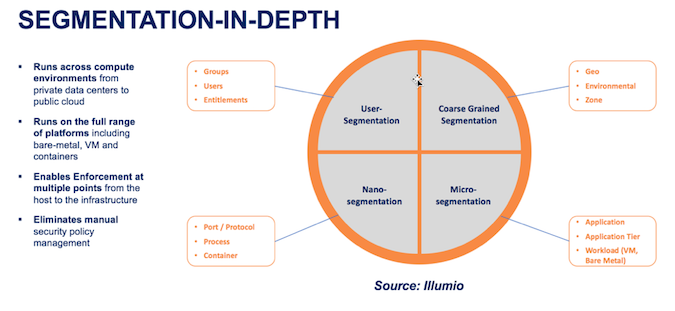A True Segmentation-in-Depth Architecture Will Harness and Coordinate Key Enforcement Points
Network segmentation was born out of the need to break large networks into smaller ones. While there are clear security benefits gained through network segmentation, the principal goal of creating subnets is to improve performance, avoiding broadcast storms and latency stimulated by our insatiable requirement for bandwidth. In this rush to connect everything, the networking industry focused on “can” versus “should.” The TCP/IP protocol was funded by folks at the Defense Advanced Research Project Agency (DARPA) to make sure packets can be routed, even if parts of the networking infrastructure were taken out of commission by a war. Networking’s goal is can: do or die, we will get packet from point a to point b.
|
“And Harry remembered his first nightmarish trip into the forest, the first time he had ever encountered the thing that was then Voldemort, and how he had faced him, and how he and Dumbledore had discussed fighting a losing battle not long thereafter. It was important, Dumbledore said, to fight, and fight again, and keep fighting, for only then could evil be kept at bay, though never quite eradicated. . . .” – JK Rowling, Harry Potter and the Half-Blood Prince |
Security segmentation is different. Security professionals take a more nuanced view of communications, focusing on whether applications and users should be allowed to communicate with each other. Should my HR database be allowed to communicate with the transaction server of my ecommerce application (no!). The entire security industry has spent the last 25 years working to block unauthorized communications unleashed by Internet-attached applications. The rapid advance of high-speed, low latency networks has translated into applications and data centers/clouds that have become considerably more distributed and connected, effectively increasing the attack surface an organization must protect.
The paradox, of course, is the genie let out of the bottle by the growth of IP networking has also spawned the cybersecurity version of the movie Groundhog Day. The more connected an organization or a nation is to the Internet, the more vulnerable it has become. The less connected it is, the less competitive it might be in a globalized economy. The challenge is finding the balance between can and should.
“The fault, dear Brutus, is not in our stars, But in ourselves” – Shakespeare, Julius Caesar
Organizations must take a new approach, build a new foundation for data center and cloud security that supports both the innovation of new applications and compute capabilities but offers critical protection against the lateral spread of attacks advanced by connectivity. The foundation of this new approach needs to include a “segmentation-in-depth” architecture: a protection strategy that reduces — if not eliminate – unauthorized communications. The heart of segmentation-in-depth is the linkage and coordination of multiple enforcement points that follow a prescriptive security policy.
Security segmentation can be delivered across the data center and cloud, and with multiple enforcement points. Places in the network are ideal for most coarse grain segmentation (i.e., separating two environments), while finer grain segmentation (i.e., microsegmentation) is best delivered closer to the data, closer to the workload. Finally, a segmentation-in-depth strategy must consider whether an organization owns/controls the infrastructure applications run on.

If an enterprise leases its infrastructure from a cloud provider like Amazon Web Services or Microsoft Azure, it will likely move closer to the host (since it does not control the network). The result is to create watertight compartments around applications tiers, apps or environments, whereby segmentation reduces the security risk to an organization by reducing the damage a bad actor can undertake.
A true segmentation-in-depth architecture will harness and coordinate enforcement points from the user, to the workload/application, to the network, and finally to the cloud. There are many puts and takes in choosing various enforcement points (fodder for the next blog), but there is one key requirement: coordination and alignment across the various points, to both reduce the operational overhead of segmentation-in-depth as well as to make sure the intersections between users, applications and infrastructure do not become entry points for bad actors hacking into the data center or cloud.














